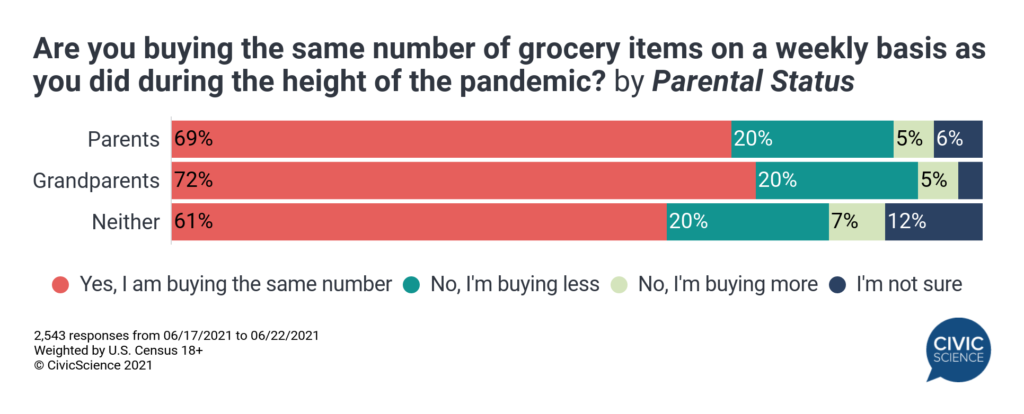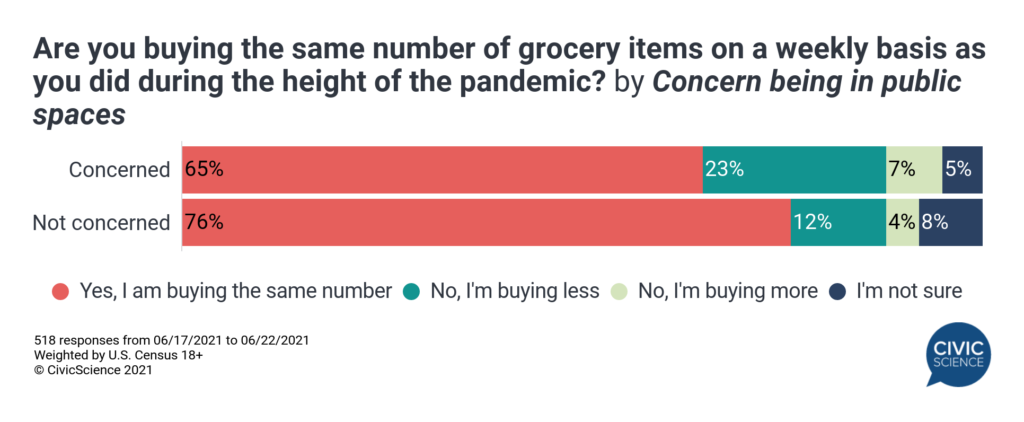Once the coronavirus reached the U.S., grocery purchasing among American consumers evolved. Behaviors related to what they were buying, how they were buying it, and how much they were buying all changed. But now that the country is largely re-opening, will grocery purchasing transform, revert, or stay at a new normal?
As the data show, 65% of U.S. adults are buying the same amount of grocery items on a weekly basis as they were during the height of the pandemic.

For reference, in April 2020 CivicScience data indicated more than half (56%) of U.S. consumers were stocking up on groceries and essentials to some extent because of the pandemic.
Those who are buying the same number of groceries tend to also be working as usual, while 38% of those who are buying less than they were during the height of the pandemic have reported not working, working fewer hours, getting less pay, or not getting paid at all. As expected, the trends here indicate that consistency of salary is the key to keeping up with peak pandemic grocery purchasing.

Grandparents are the most likely to be buying the same number of grocery items as they did last spring, suggesting crisis mode is still affecting many people, particularly those in older generations.

The data also reveal that buying the same number of grocery items as during the height of the pandemic is not a behavior solely of those who want to avoid public spaces or stay home.
Those who report minimal concern about being in public spaces in 2021 are significantly more likely to say they are still buying the same number of grocery items as they were during peak COVID-19 months.

The same trend is noticeable among those who reported in 2021 that they were comfort traveling. Those who are ready to go on vacation now (or have been since January 2021) have the greatest percentage of people buying just as many grocery items as they were previously.

Pandemic concerns aren’t necessarily correlating with the continued elevation of grocery-buying. While the level of stocking up isn’t even close to where it was during the initial spread of the coronavirus, for many, a sense of preparedness might be the new normal.








